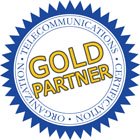Course 101: Broadband, Telecom, Datacom and Networking for Non‑Engineers There are only three possible answers to any question anyone ever asks:
1) Money.
2) History.
3)It's all pretty much the same.
This article previously appeared in the free monthly Teracom newsletter. subscribe
In this article, we are are presenting Answer Number 1: Money.
In the telecommunications business, when someone asks, "Why was it designed that way?" or "What are we really discussing?", the answer usually boils down to money.
The reason for this is that it is very easy to measure results in the telecommunications business. Not like in the psychology business, where it is very difficult to measure results; in the telecommunications business, we can measure how many bits per second are transferred from one place to another - and not surprisingly, there is a strong correlation between that and how much you have to pay for it.
Technologies like POTS, T1, T3, SONET, ISDN and others are all essentially tradeoffs between cost and performance decided by a group of people sitting around a conference table one Tuesday morning.
T1 is a good example of this. T1 was designed in the late 1950s by a group of people at Bell Labs in Holmdel, New Jersey. The requirement was to implement "digital" communications on the existing copper wire transmission circuits, to increase the number of phone calls carried on a set of physical wires. Presumably, analyses were performed, lab experiments and field trials were undertaken, and it was discovered that if they spaced the repeaters about 1 mile apart, that it would be possible to transmit about 1.5 Mb/s most of the time on most of the existing wires... so they decided to go with that, and 1.5 Mb/s became a standard line speed in the industry.
They could have spaced the repeaters 2 miles apart, and it would have been cheaper to implement, but it also would have run more slowly. This was a tradeoff between cost and performance.
For more information: Course 101, Broadband, Telecom, Datacom and Networking for Non‑Engineers


